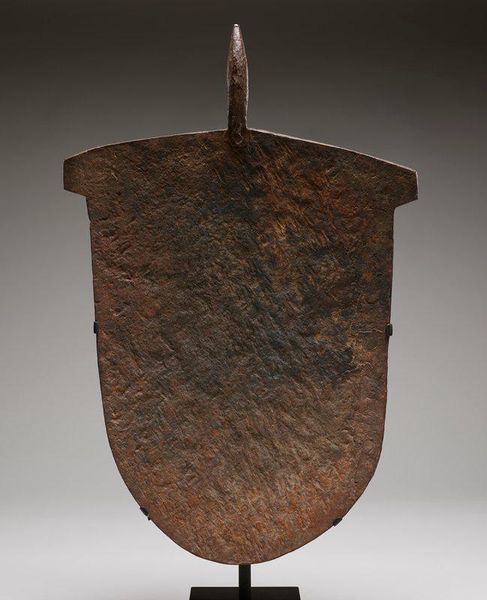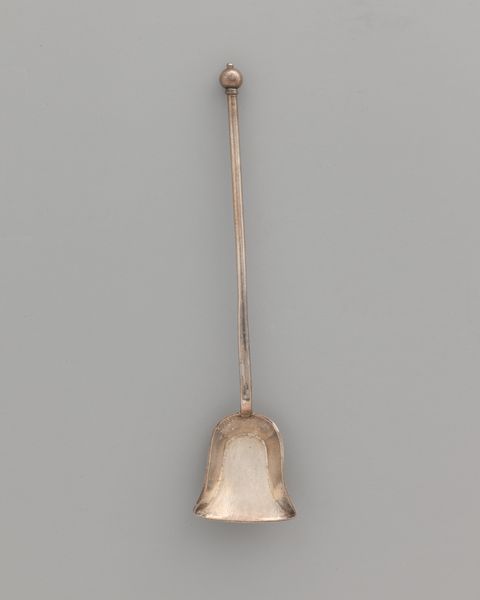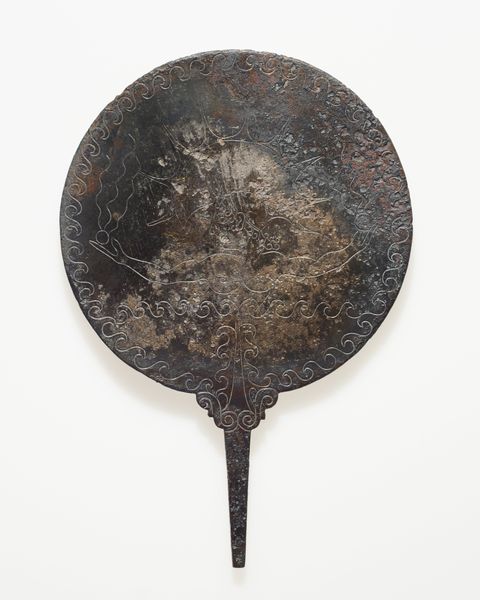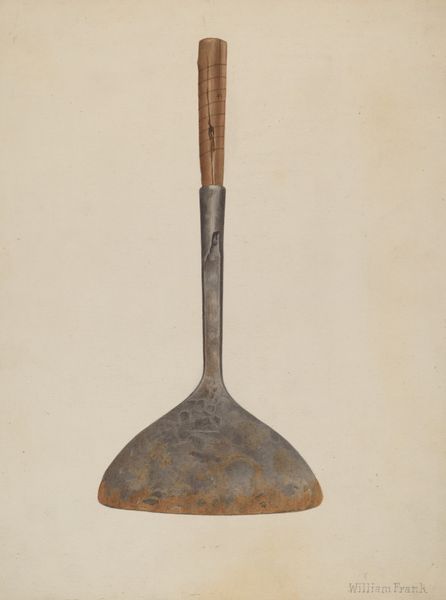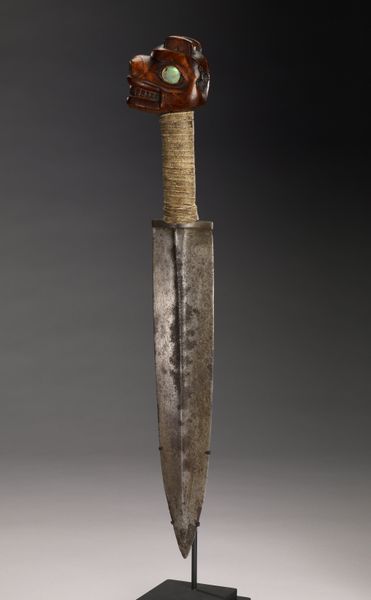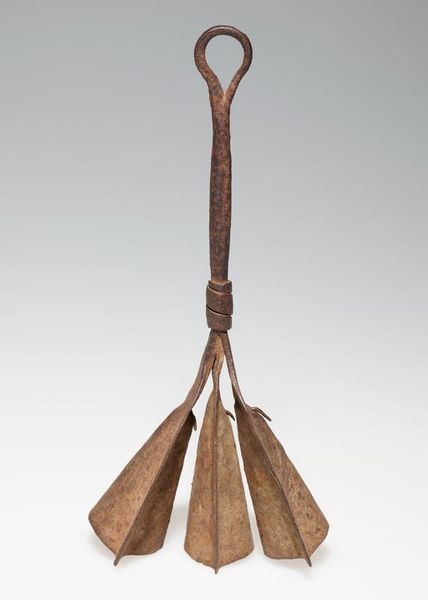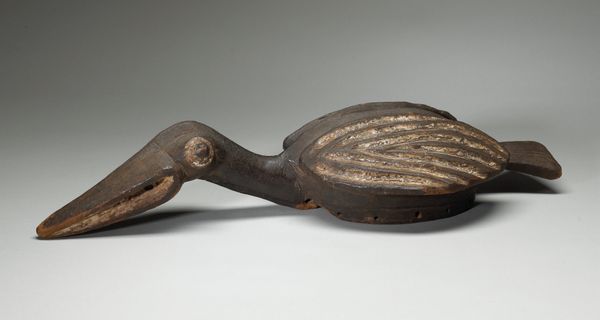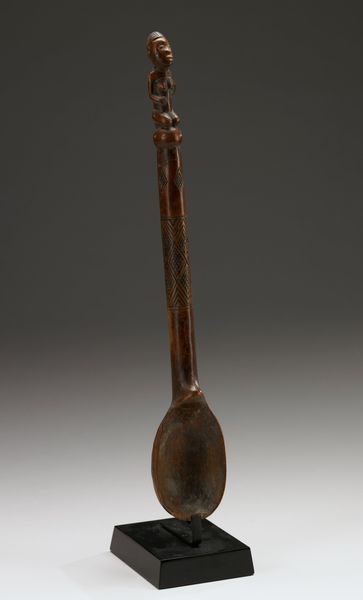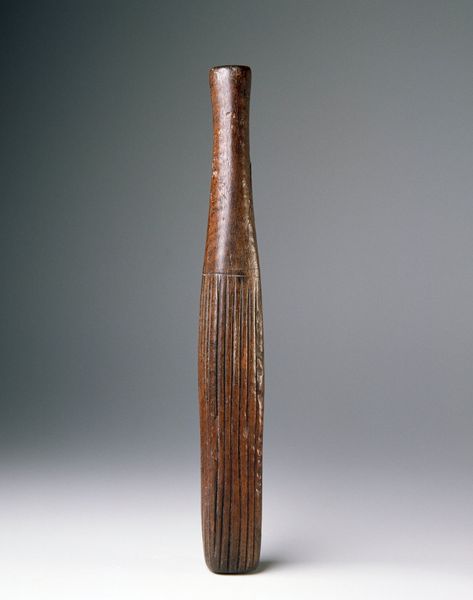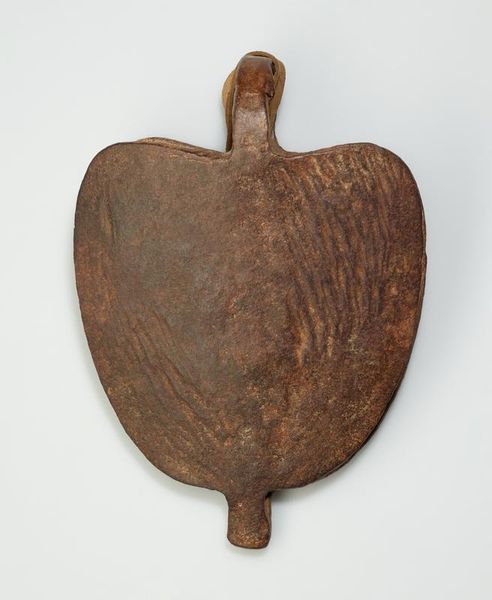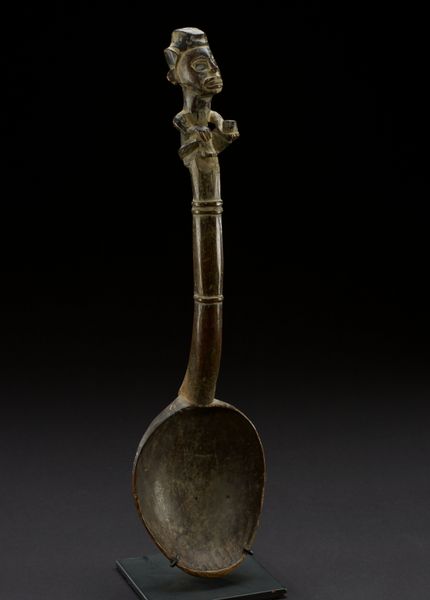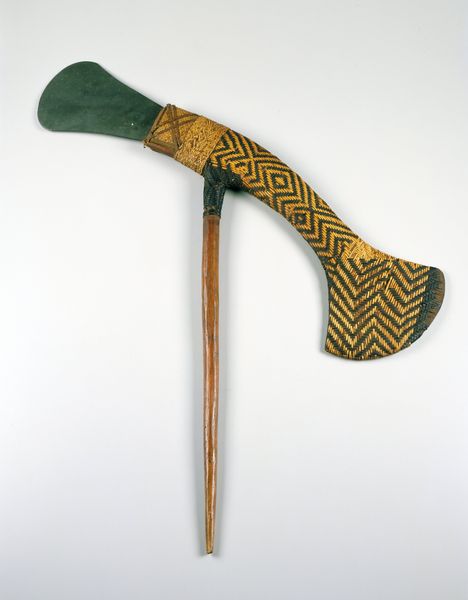
metal
#
metal
#
decorative-art
Dimensions: 1.27 × 32.4 × 45.7 cm (1/2 × 18 × 21 3/4 in.)
Copyright: Public Domain
Editor: Here we have an intriguing piece from the Art Institute of Chicago: an anonymous "Fan (Anniversary Tin)," made sometime between 1850 and 1900 entirely of metal. I find the use of such a rigid material for an object typically associated with delicate movement and cooling to be quite unexpected. What’s your perspective on this, seeing it made of tin rather than something more typical like paper or feathers? Curator: Well, the immediate thing that jumps out is the demystification of the decorative object. Think about the social context: mass production of tinware was booming, providing affordable, durable goods. To make a fan from tin, especially for what’s implied to be an anniversary gift, recontextualizes a luxury item as a common, everyday artifact. It forces us to consider how the materiality of objects speaks to broader shifts in manufacturing and access. It transforms ideas around what counts as craft, as art. Editor: That's fascinating, the idea that it democratizes the fan. The fan design itself, these repeated metal pleats…Does it also suggest a new aesthetic tied to industry? Curator: Absolutely. The very material speaks to the values of durability and affordability over traditional embellishment, shifting perceptions of beauty and worth. Think of the labor involved, the techniques used to shape and assemble this fan – they mirror those found in other industries, breaking down the barrier between fine art and utilitarian production. Who was crafting these fans, how available were such items, who owned them - these are crucial questions for our understanding of it. It becomes less about individual expression, and more about the collective processes that defined the period's material culture. Editor: So by using a common material like tin, this fan blurs the lines between art, craft, and industry, which opens a window into 19th century social changes. Curator: Precisely. Editor: Thanks! It really reframes how I see functional, everyday objects as commentary on society.
Comments
No comments
Be the first to comment and join the conversation on the ultimate creative platform.
